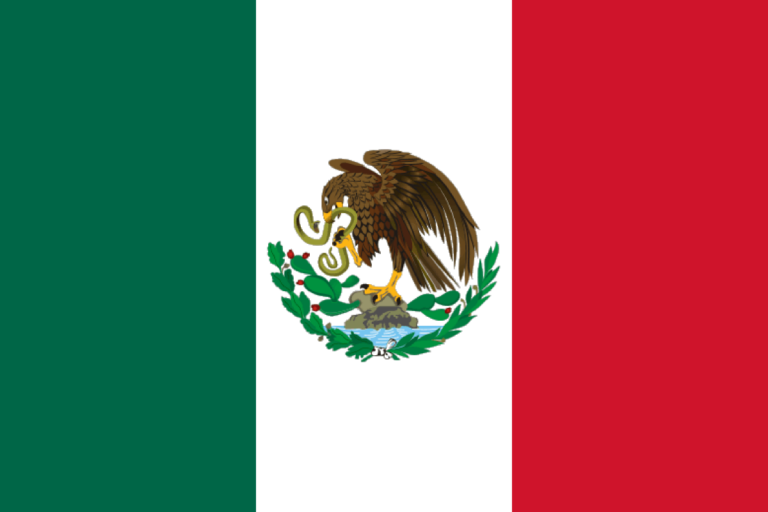Population control was not imposed on China by the West, as it was imposed on smaller, weaker countries, but that doesn’t absolve the West of all responsibility for the one-child policy and its attendant abuses. Not only did Western-funded organizations like the UNFPA, IPPF and others lend China their enthusiastic support but, as recent research makes clear, the intellectual impetus for the policy came from the West.1 Vaporous Sixties ideas about population growth and resource depletion had explosive real-world consequences a decade later and half a world away. The core ideas underlying the one-child policy, it turns out, came from Western “science,” more precisely from the notorious 1974 Club of Rome study that asserted we were breeding ourselves to extinction.
The Beginning
The Limits to Growth computer simulation, carried out by a group of MIT-based systems engineers, predicted that the world would come to an end by about 2070 if population growth continued.2 The authors saw “no other avenue to survival” than population control, which was “the only feasible solution” to mankind’s dilemma.3 The book’s conclusions lent themselves to hype which, it turned out, was precisely what the Club of Rome wanted. A public relations firm was hired, a press conference was organized, and the book was released with great fanfare. Scary stories sell, and this one sold a frightening four million copies, injecting the book indelibly into the world’s consciousness.
The stage was now set for Song Jian, a systems control specialist for China’s state-owned defense industry, to visit Europe in 1978. He might as well have come from another planet. Like other Chinese intellectuals, he had been isolated from the outside world for decades, and was desperately eager to catch up on developments. During his trip, as he later wrote, he “happened to learn about the application of systems analysis theory by European scientists to the study of population problems with a great success. For instance, in a “Blueprint for Survival” published in 1972, British scientists contended that Britain’s population of 56 million had greatly exceed the sustaining capacity of ecosystem of the Kingdom. They argued Britain’s population should be gradually reduced to 30 million, namely, a reduction by nearly 50 percent … I was extremely excited about these documents and determined to try the method of demography.” [typographical errors in original]4 He had been to the future, or so he thought. In his baggage when he returned to China was a copy of The Limits to Growth.
Scientific Hoax
Although Song Jian had no way of knowing it, what he thought was cutting-edge systems analysis was little more than a scientific hoax. The data were incomplete and sometimes inaccurate, its methodology was flawed, and it assumed — wrongly — that scientific and technical advances would cease.5 In Julian Simon’s words, “The Limits to Growth has been blasted as foolishness or fraud by almost every economist who has read it closely or reviewed it in print.”6 But the most decisive refutation of the study came from the Club of Rome itself, which two years after its publication suddenly “reversed its position” and “came out for more growth.”7 The Club’s founder, Italian industrialist Aurelio Peccei, offered a remarkable explanation for this about-face: “Limits was intended to jolt people from the comfortable idea that present growth trends could continue indefinitely.”8 In other words, they rigged the study in order to dupe people into demanding population control.
Song Jian — A Convert
In Song Jian they captured their most important convert ever, for through him their little caper impacted the lives of over a billion people — and continues to do so down to the present day. Borrowing the strident rhetoric of the Club of Rome report, he popularized the notion of a world in crisis; “Facing the rapid increase in population, countries everywhere are watching developments with grave concern.”9 He regurgitated its scary scenarios of ecological devastation, applying these specifically to China: “The vegetable cover has been progressively removed so that only about 12 per cent is forested … the grass-cover, too, has been shrinking each year and the deserts have tended to expand … These developments are threatening ultimately to destroy the ecosystem which supports human life.” And he drew the same conclusion: “The capacity of the land … does not permit excessive increases in population. This is quite obvious.”10 He reinforced his rhetoric with eye-catching charts showing China’s population remaining low for 4,000 years, then spiking up terrifyingly to 1 billion by 1980.11 No mention was made of recent, dramatic declines in the birth rate.12
Other experts jumped into the debate, arguing that not only China’s ecology but its economy was collapsing under the weight of its gargantuan population. Population growth was said to be responsible for every conceivable economic ill, from rising levels of unemployment and poverty to falling levels of labor productivity and investment. China, it seemed, faced a population crisis of enormous proportions which, if left unchecked, would shatter any hope of ever joining the ranks of the developed nations. Nothing less was at stake than the country’s drive for wealth and global power, warned Vice Premier Chen Muhua in the pages of the People’s Daily: “In order to realize the Four Modernizations, we must control population growth in a planned way.”13
China’s “Optimal” Population
Once the Chinese leadership had been, to use Club of Rome terminology, jolted into accepting the idea that population growth was sabotaging the nation’s modernization, they were ripe for a radical solution. After all, the future of the Chinese nation hung in the balance. It was Song Jian, armed with a computer simulation right out of the pages of The Limits to Growth, who offered one.
After returning from Europe, Song set out to replicate the systems analysis studies he had stumbled across in Europe, this time with China as the subject. He formed a research group comprised of two other systems control specialists, one economist, and himself. Using newly available computer technology, the Song group first set out to calculate China’s “optimal” population in the year 2080. Making the same kinds of highly questionable assumptions as their Club of Rome mentors, using data that were even more fragmentary, they calculated that the optimal population in 2080 would be between 650 and 700 million people. This figure, which was roughly two-thirds of China’s 1980 population, they proposed as the goal of any birth control program.14 China’s “only choice” was to reduce the population down to this level. Song maintained, borrowing the Limits language. There was simply “no other way,” “no other choice.”15
In order to determine the level of fertility control necessary to reach this goal, the group next projected future population growth under different child-bearing schemes: 3.0, 2.3, 2.0, 1.5, 1.0. The first three they rejected out of hand. If the people were allowed to continue to bear children at the 1978 rate — a total fertility rate of 2.3 — they calculated that the population would grow to 2.12 billion in 2080. Even if the TFR were forced down to 2.0, there would still be 1.47 billion Chinese alive after a century. These schemes “obviously cannot be adopted,” they said. The seriousness of the population crisis required sterner measures. Limiting women to an average of 1.5 children produced the kind of population reduction they were looking for. Under this scenario, the number of Chinese would decline to 777 million by 2080, within striking distance of their “optimum population” of 650–70O million. Under their final scenario, in which every couple would be limited to one child by 1985, the population would plummet to only 370 million, well below the optimum.16
Chinese Policy is Set
The Song group was well-connected, and soon after completing their computer simulations they were able to present them to top Communist Party and government leaders. These were reportedly “very impressed with the science and the numbers.”17 As well they might be. The presentation by the Song group confirmed one of their most cherished beliefs, namely, that Western science and technology, appropriately applied to the Chinese context, would be the salvation of their nation. As Greenhalgh writes, “The attitude towards everything foreign was close to idolatry. This was to have fateful consequences, as Western ‘science’ — at least one odd brand of it — became the core of Chinese policy.”18
The computer simulation presented by the Song group — perhaps the first that senior leaders had ever seen — must have been greeted with not only awe but relief. Here was welcome confirmation that “overpopulation,” rather than, say, economic mismanagement or political turmoil, was the true source of China’s backwardness. And not only had the Song group used Western “science” to identify the problem, it had used those same techniques to devise a plan to save China from the flood of people that threatened to inundate it. Scientific and technological modernization, named by Paramount Leader Deng Xiaoping the most important of his Four Modernizations, was paying off. How proud they must have been that their own scientists, using the latest in Western “science,” had so precisely calculated China’s “optimum population.” That Song’s group was even able to offer precise advice on fertility levels and future population numbers was an added bonus. The leadership had few qualms about regulating the fertility of its subjects — it had done worse over the previous three decades — but Song’s insistence that Western “science” left them “no other choice” made the decision easy.
One Child Solution
The only question was whether to adopt the 1.5 child per family policy preferred by the Song group, or to impose an even more restrictive one-child-per-family policy. The leadership in the end rejected the 1.5 children option, apparently fearing that the peasants would then push for two or more.19 When Song’s study was later published in the People’s Daily on 7 March 1980, it was edited to read that the 1.5 child per family policy would be “disadvantageous to our country’s four modernizations … and to the raising of the people’s standard of living.” The one-child-per-couple policy, which results in a population much smaller than the supposed optimum, was described as “a comparatively ideal scheme for solving our country’s population problem.”20
Publication in the official party organ, the People’s Daily, meant that the policy had received the imprimatur of the Communist Party and was therefore beyond further discussion and debate (such that there is in China). Six months later, in mid-September 1980 the one-child policy was formally ratified by third session of the Fifth National People’s Congress. From then on it was set in stone. On this terrible altar hundreds of millions mothers and children have suffered and died, sacrificed for a scientific fraud.
The flagrant intellectual dishonesty of the Club of Rome’s Limits to Growth report had striking real-world effects in China, having metamorphosed into the one-child policy and, as such, proven fatal to a considerable number of Chinese women and baby girls.21 It may be that the Club of Rome merely wanted to shock the Western world out of its complacency about population growth, but Chinese women and baby girls have died in earnest.
The Party, for its part, was happy to blame China’s “overlarge population” for all of China’s problems and backwardness, since this distracted the people from its own errors of the preceding three decades. Population growth became an all-purpose villain in the official press, blamed for everything from declines in labor productivity to sagging economic growth. If only you wouldn’t have so many children, the Communist Party continues to chide the people even today, we could achieve wealth, power and glory for China in a few years.
As the China case puts in stark relief, the real danger to men, women and children of the developing world is not “overpopulation” at all, but rather alarmist notions of overpopulation, The notion that people are somehow social, ecological and economic nuisances is a pernicious one, predisposing governments to treat their own citizens as a form of pestilence. Instead of trying to lift their poor out of poverty, governments instead try and reduce their numbers. Authentic economic development is neglected, human rights abuses abound, and everyone’s freedoms are put at risk. Population control encourages domestic tyranny of a very personal and deadly sort.
Endnotes
1 Tien, H. Yuan, “Demography in China: From Zero to Now,” Population Index 47(4):683–710; Tien, China’s Strategic Demographic Initiative (New York, Praeger: 1991); Susan Greenhalgh, “Science, Modernity, and the Making of China’s One-Child Policy,” Population and Development Review. 2003.
2 D. H. Meadows et al, The Limits to Growth: A Report for the Club of Rome’s Project on the Predicament of Mankind. (Universe Books, New York: 1972).
3 Meadows et al. 1974: 196; “The Only Feasible Solution” is the title of Chapter 9 of the second volume of the report, Mankind at the Turning Point by Mesarovic, Mihajlo and Eduard Pestel. Mankind at the Turning Point: The Second Report to the Club of Rome (New York, E. P. Dutton: 1974).
4 Song Jian, 1986, “Systems Science and China’s Economic Reforms,” in Control Science and Technology for Development, Yang Jiachi, ed., pp. 1–8. Oxford: Pergamon. In this section I draw upon Susan Greehalgh’s “Science, modernity, and the making of China’s One-Child Policy,” Population and Development Review, June 2003.
5 As a demonstration of the significance of its error, these rules were used to predict the period 1870 to 1970 from the basis of what was known in 1870, and the computer predicted that the world would come to an end before 1970, in part because of the inability to control the massive amounts of horse manure. This can stand as an apt commentary on the whole enterprise. See Robert Sassone, Handbook on Population, Fifth Edition (ALL, Stafford, Virginia, 1994), p. 6.
6 Julian Simon, The Ultimate Resource (Princeton university Press, Princeton: 1981), p. 286. See, inter alia, Cole, H.S.D., Christopher Freeman, Marie Jahoda, and K.L. R. Pavitt, eds., 1973. Models of Doom: A Critique of the Limits to Growth, (New York, 1973: Universe).
7 Time magazine, 26 April 1976, p. 56; New York Times, 14 April 1976.
8 Time magazine, 26 April 1976.
9 Song Jian, “Population Development — Goals and Plans,” in China’s Population: Problems and Prospects, Liu Zhen, Song Jian, et al, eds., pp. 25–31. (Bejing, New World Press: 1981) Note that this English-language publication came out several years after Song had begun circulating these same ideas inside of China.
10 Song, 1981: p. 26.
11 Song et al, 1985.
12 Chinese figures of the time showed that the years 1971–79 saw the natural increase rate fall by half, from 23.4 to 11.7, and the crude birth rate decline by almost as much, from 30.7 to 17.9. Tian, H. Yuan, 1981. “Demography in China: From Zero to Now,” Population Index 47(4): 683.
13 Chun Muhua, “In order to Realize the Four Modernizations, We Must Control Population Growth in a Planned Way,” Renmin Ribao (People’s Daily), 11 August 1979, p. 2. The “four Modernizations” was Deng Xiaoping’s plan to modernize China’s science and technology, military, industry, and agriculture by century’s end.
14 Song, 1981, p. 28–30
15 Song, 1981: 31.
16 Song Jian, Tain Xueyuan, Li Guangyuan, and Yu Jingyuan, 1980, “Concerning the Issue of Our Country’s Objective in Population Development,” Renmin Ribao (People’s Daily), 7 March 1980, p. 5.
17 Greenhalgh.
18 Greenhalgh.
19 Greenhalgh.
20 Song Jian, Tain Xueyuan, Li Guangyuan, and Yu Jingyuan, 1980, “Concerning the Issue of Our Country’s Objective in Population Development,” Renmin Ribao (People’s Daily), 7 March 1980, p. 5.
21 Susan Greenhalgh, “Science, Modernity, and the Making of China’s One-Child Policy,” Population and Development Review. The author seems intent to shield the Club of Rome in particular, and the overpopulation school in general, from any responsibility for what has happened in China, although the body of her text makes it clear that this is where some responsibility lies. She is also at pains to deny that those who natively imported the notion of a “population crisis” into China should be held responsible, even though it was they who convinced senior leaders to adopt a policy that was inhumane on the face of it, and became even more so as it is was operationalized. One appreciates the necessity of protecting one’s informants — she interviewed the principal Chinese players in the course of doing her paper — but surely some apportioning of responsibility is appropriate under the circumstances. The author, for whatever reason, fails to reach the conclusions demanded by the evidence she has amassed. Perhaps she doesn’t believe in the existence of free will, but rather that they were merely reacting to their environment, following orders, or fated. This, of course, is perilously close to the Eichmann defense.










